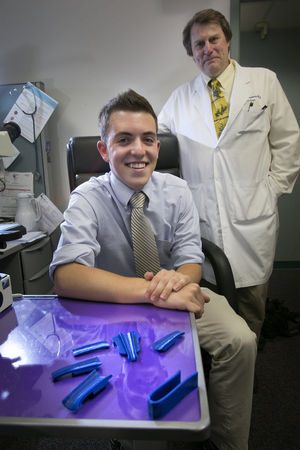There’s been a lot of promise for 3DP to revolutionize the field of medicine. We’ve even seen a lot of progress in that direction with 3D printed liver cells and prostheses. But, for small hospitals in third world countries[1], basic supplies can sometimes be a costly necessity and to wait for a simple item – one that may be found easily in developed nations – to be purchased from a city that’s an hour and a half away or, worse, shipped in from overseas, can seem to take far too long. By creating .stl files for a field splint, Ian McHale, a senior at Steinert High School, has made his contribution to what I hope will become an extensive library of 3d printable medical supplies.

McHale didn’t create the splints alone. The project sprang from his enrollment in the Mini Medical School program at Robert Wood Johnson University Hospital Hamilton, a program designed to get the local community familiar with science. The high school senior worked closely with his mentor, RWJUHH pathologist Dr. Richard Siderits. Siderits had already been working with additive manufacturing[2] when his mentee approached him to learn more. Siderits then helped him craft a suitable CAD prototype for the field splint. You can see the good doctor explain the modeling process in the video below:
The splint prototype may seem like a small step towards fixing the problem of lack of access to quality medical care seen the world over, but its value has not gone unnoticed. At a local science and engineering fair, McHale received 1st place for Science and Engineering Fairs United States Army Award from the United States Army Awards Program, 2nd place in the Senior Division in the field of Engineering Materials and Bioengineering, a Certification of Achievement from the United States Department of the Army, Army Awards Program, and a Certificate of Achievement from United States Department of the Air Force Science Fair Program.
Sources: Thingiverse, The Times
[1]Such as my parents’ own medical clinic in Bolivia.



